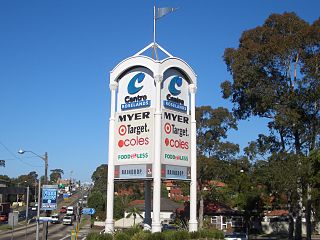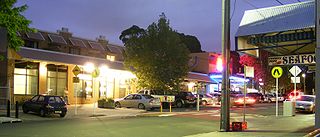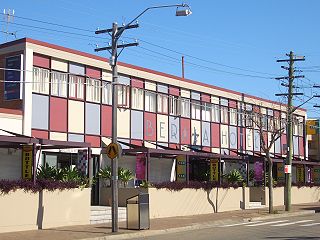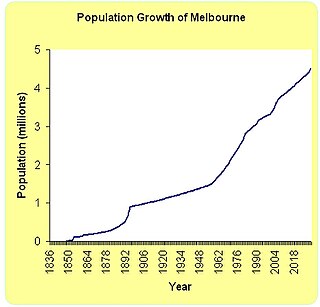
Lakemba is a suburb south west of Sydney, in the state of New South Wales, Australia. Lakemba is located 12 kilometres south west of the Sydney central business district, in the local government area of the City of Canterbury-Bankstown. It is the easternmost suburb in Greater Western Sydney.

Villawood, a suburb of local government areas City of Canterbury-Bankstown and City of Fairfield, is 22 kilometres west of the Sydney central business district, in the state of New South Wales, Australia, and is a part of the Greater Western Sydney region.

Illawong is a suburb in southern Sydney, in the state of New South Wales, Australia. Illawong is located 27 kilometres south of the Sydney Central Business District, in the local government area of the Sutherland Shire in the area commonly called Menai. The post code is 2234, which is also assigned to the contiguous suburbs of Menai, Bangor Barden Ridge and Alfords Point.

Roselands is a suburb to the south-west of the Sydney CBD, in the state of New South Wales, Australia. Roselands is located 16 kilometres south-west of the Sydney central business district in the City of Canterbury-Bankstown. It is the easternmost suburb in the Western Sydney area.

Alternate uses: Regents Park (disambiguation)

Lansvale is a suburb of Sydney, in the state of New South Wales, Australia 28 kilometres south-west of the Sydney central business district, the other side of Chipping Norton and its lake, in the local government areas of the City of Fairfield and is part of the South-western Sydney region.

Condell Park, a suburb of local government area City of Canterbury-Bankstown, is 22 kilometres south-west of the Sydney central business district, in the state of New South Wales, Australia, and is a part of the south-western Sydney region. The postcode of Condell Park is 2200, which is shared with Bankstown and Bankstown Aerodrome.

Belfield is a suburb of Sydney, in the state of New South Wales, Australia. It is 8 miles (13 km) southwest of the Sydney central business district, in the local government area of the City of Canterbury-Bankstown and partly in the Municipality of Strathfield.

Berala is a conjunctional western suburb of Sydney, which connects the inner west, south west and west parts of Sydney in the state of New South Wales, Australia, located 16 kilometres west of the central business district, in the local government area of Cumberland Council.
Vietnamese Australians are Australians of Vietnamese ancestry, or people who migrated to Australia from Vietnam. Communities of overseas Vietnamese may be referred to as Việt Kiều or người Việt hải ngoại.
Lebanese Australians refers to citizens or permanent residents of Australia of Lebanese ancestry. The population is diverse, having a large Christian religious base, being mostly Maronite Catholics, while also having a large Muslim group of Sunni branch of Islam.

The Assyrian diaspora refers to ethnic Assyrians living in communities outside their ancestral homeland. The Eastern Aramaic-speaking Assyrians claim descent from the ancient Assyrians and are one of the few ancient Semitic ethnicities in the Near East who resisted Arabisation, Turkification and Islamisation during and after the Arab conquest of Iraq, Syria, Turkey and Iran.

The Kurdish population is estimated to be between 30 and 45 million. Most Kurdish people live in Kurdistan, which today is split between Iranian Kurdistan, Iraqi Kurdistan, Turkish Kurdistan, and Syrian Kurdistan.
Macedonian Australians are Australian citizens of Macedonian descent. Many arrived in the 1920s and 1930s, although larger numbers came to Australia after World War II and the Greek Civil War. By far the largest wave of immigration was during the 1960s and 1970s.
Iraqi Americans are American citizens who originate from Iraq. They may be of varying ethnicities and religions, Iraqis are those of mostly Arabs origins, but including ethnic minorities; Iraqi Assyrians, Iraqi Turkmens, Iraqi occupied Kurds of Kurdistan, Armenians, Iraqi Jews, Mandaeans, and Yazidis. As of 2015, the number of Iraqi Americans is around 145,279, according to the United States Census Bureau.

Assyrian Australians are Australians of Assyrian descent or Assyrians who have Australian citizenship. According to the census, 40,218 persons are Assyrian, 21,166 identified themselves as having Chaldean ancestry. Historically, Assyrian people were indigenous to their ancient ancestral Assyrian homeland that corresponds to modern-day northern Iraq, southeast Turkey northwestern fringes of Iran and northeast Syria. The majority of Assyrian Australians have immigrated mainly from Iraq, Iran, Syria, Jordan and the Caucasus.
Chilean Australians are Australians of Chilean descent or Chileans who have obtained Australian citizenship. Chileans are the second largest group of Latin American Australians residing in Australia. The biggest Chilean Australian communities are primarily found in Sydney, Melbourne and Canberra.

Australians, colloquially referred to as "Aussies", are the citizens, nationals and individuals associated with the country of Australia. This connection may be residential, legal, historical or ethno-cultural. For most Australians, several of these connections exist and are collectively the source of their being Australian. Australian law does not provide for a racial or ethnic component of nationality, instead relying on citizenship as a legal status.

Melbourne is Australia's second largest city and has a diverse and multicultural population.
Arab Australians refers to Australian citizens or residents with ancestry from the Middle East and North Africa, regardless of their ethnic origins. The majority are not ethnically Arab but numerous groups who include Arabs, Kurds, Copts, Druze, Maronites, Assyrians, Berbers, Turkmens and others. The majority are Christian by faith with minorities being Muslim, Druze, Yazidi and other faiths.















